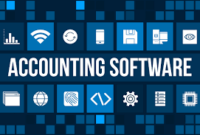Comprehensive Guide to Becoming an IBM Developer for z/OS
The IBM z/OS operating system has been a cornerstone of enterprise computing for decades, handling mission-critical workloads with unparalleled reliability and performance. As industries like finance, healthcare, and government continue to depend on z/OS, the need for skilled professionals who can develop, maintain, and innovate within this environment has grown. Enter the role of an IBM Developer for z/OS, a specialized position with significant impact on businesses operating on large-scale, transaction-heavy platforms.
This comprehensive guide will cover everything you need to know about becoming an IBM Developer for z/OS, from understanding what z/OS is, to the skills and tools you’ll need, and why this career path is a promising one in today’s tech landscape. Whether you’re considering entering the field or looking to refine your current skillset, this article will serve as an essential resource.
What is IBM z/OS?
Definition and History of z/OS
IBM z/OS is a 64-bit operating system that runs on IBM’s mainframe computers, which are renowned for their reliability, scalability, and security. First introduced in 2001, z/OS evolved from earlier IBM operating systems, including OS/360 and MVS, making it one of the most stable and sophisticated systems available. Companies across industries rely on z/OS for handling high-volume transactions, database management, and large-scale computing tasks.
What sets z/OS apart is its ability to run complex applications while maintaining uptime levels that can approach 100%. This makes it invaluable in environments where downtime is not an option, such as banking, government, and healthcare. In addition to supporting legacy applications, z/OS has evolved to support modern workloads, including cloud integration and advanced analytics, further cementing its relevance in today’s enterprise computing landscape.
The Importance of z/OS in Enterprise Computing
Despite the rise of cloud computing and distributed systems, z/OS continues to play a vital role in enterprise IT infrastructures. The operating system is capable of handling massive amounts of data and transactions efficiently and securely, making it ideal for industries that rely on accurate, real-time processing. For example, global banks use z/OS to process millions of financial transactions daily, while government institutions use it to handle citizen data securely.
In the age of digital transformation, z/OS is also crucial in hybrid IT environments. It seamlessly integrates with cloud platforms, making it possible to run both legacy and modern applications side by side. As a result, organizations can continue leveraging their existing mainframe investments while adopting new technologies, a balance that helps reduce operational costs and risk.



